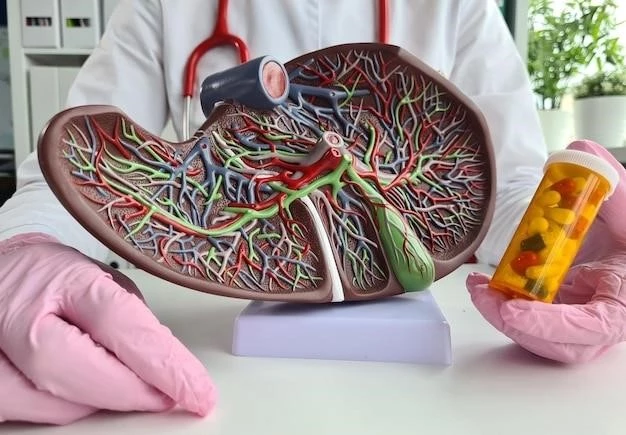Understanding Liver Neoplasms
When it comes to liver neoplasms, understanding the disease is key to effective management. This article aims to provide comprehensive information on liver growths, including benign liver neoplasms and hepatocellular carcinoma. Stay informed to make informed decisions about your health.
Introduction to Liver Neoplasms
Welcome to the world of liver neoplasms, where various growths and tumors can affect this vital organ. Liver neoplasms encompass benign liver neoplasms, liver cysts, and the more concerning liver malignancies like hepatocellular carcinoma. Understanding the different types of liver growths is crucial for early detection and effective treatment. Stay tuned to uncover the intricacies of liver neoplasms, their causes, symptoms, and treatment options to empower yourself with the knowledge needed to navigate this complex disease.
Types of Liver Neoplasms
When it comes to liver neoplasms, there are various types that can affect the liver. These include benign liver neoplasms, which are non-cancerous growths such as hemangiomas and focal nodular hyperplasia. On the other end of the spectrum are liver malignancies, with hepatocellular carcinoma being the most common type of primary liver cancer. Understanding the different types of liver neoplasms is essential for accurate diagnosis and tailored treatment plans. Stay informed about the characteristics and implications of each type to make informed decisions regarding your health.
Causes and Risk Factors
Understanding the causes and risk factors associated with liver neoplasms is crucial for prevention and early detection. While the exact cause of liver malignancies like hepatocellular carcinoma is often unknown, certain factors can increase the risk, including chronic hepatitis B or C infection, liver cirrhosis, excessive alcohol consumption, obesity, and exposure to aflatoxins. Benign liver neoplasms can be influenced by factors such as genetics, hormonal changes, or vascular abnormalities. Stay informed about these risk factors and take proactive steps to reduce your chances of developing liver neoplasms.
Symptoms and Diagnosis
Recognizing the symptoms of liver neoplasms and obtaining a prompt diagnosis are crucial for early intervention. Symptoms may vary depending on the type of neoplasm but can include abdominal pain, unexplained weight loss, jaundice, fatigue, and a palpable mass in the abdomen. Diagnosis often involves imaging tests such as ultrasound, CT scan, MRI, or a liver biopsy to confirm the presence of liver growths and determine their nature. If you experience persistent symptoms or have risk factors for liver neoplasms, consult a healthcare provider for timely evaluation and diagnosis.
Treatment Options
When it comes to treating liver neoplasms, the approach depends on the type and stage of the neoplasm. Treatment options may include surgery to remove the tumor, liver transplant in some cases, ablation therapy, embolization, targeted drug therapy, or chemotherapy. For benign liver neoplasms, monitoring the growth and addressing symptoms may be sufficient. It is essential to discuss with your healthcare team to determine the most suitable treatment plan tailored to your specific condition and needs. Stay proactive in managing your liver neoplasms to ensure the best possible outcome.
Managing Liver Neoplasms
Managing liver neoplasms involves a comprehensive approach aimed at controlling the growth of tumors, alleviating symptoms, and improving overall well-being. This may include close monitoring of the neoplasm through imaging tests, following a healthy diet, engaging in regular physical activity, avoiding alcohol and tobacco, and adhering to prescribed treatment plans. Support groups and counseling can also play a valuable role in managing the emotional impact of liver neoplasms. By actively participating in your care and adopting a holistic approach to wellness, you can effectively manage liver neoplasms and optimize your quality of life.
Complications and Prognosis
Complications of liver neoplasms can vary depending on the type and stage of the growth. Possible complications include liver failure, portal hypertension, ascites, and metastasis to other organs. The prognosis for liver neoplasms also differs based on factors such as the size and location of the tumor, overall health of the individual, and response to treatment. Early detection and proactive management can positively influence the prognosis. It is essential to work closely with your healthcare team to address complications promptly and navigate the prognosis with a proactive and informed approach.

Prevention Strategies
While not all liver neoplasms can be prevented, there are steps you can take to reduce your risk. Maintain a healthy weight, limit alcohol consumption, get vaccinated against hepatitis B, avoid exposure to aflatoxins, and follow a balanced diet rich in fruits, vegetables, and whole grains. Regular exercise and routine health screenings can also help in early detection. By adopting these preventive measures and making healthy lifestyle choices, you can lower your risk of developing liver neoplasms and promote overall liver health. Consult with your healthcare provider for personalized guidance on prevention strategies.
